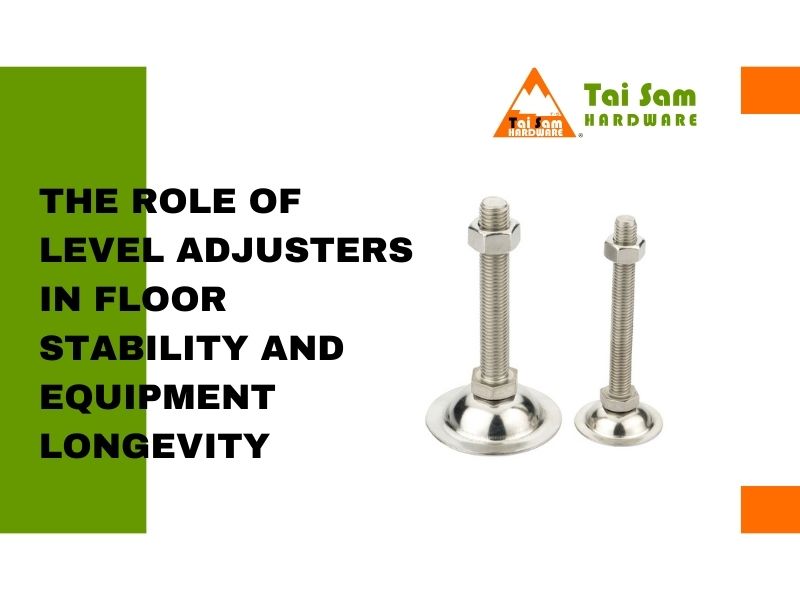

RELEASE DATE - 2025.05.21

In industrial environments, equipment performance isn’t just defined by speed or precision—it depends heavily on structural stability. Uneven floors, constant vibrations, and load imbalances can compromise both productivity and safety. One small but essential solution is the level adjuster.
Recognizing these challenges, TAI SAM HARDWARE has developed a range of level adjusters designed to improve machine stability, reduce vibrations, and extend the service life of industrial equipment. Backed by years of manufacturing experience, our solutions help businesses create safer, more efficient workspaces.
A level adjuster—also called a leveling foot or machine foot—is a mechanical component mounted beneath machines, cabinets, workbenches, or conveyor systems. It allows for precise height adjustment and ensures firm, even contact with the floor, even in facilities where flooring is not perfectly level.
Core components typically include:
Level adjusters come in a range of materials, including zinc-plated steel, stainless steel, nylon, and aluminum, tailored to different industries and environments.
Even a slight floor slope can lead to serious issues in industrial operations. Unleveled equipment can:
Correcting these issues with a level adjuster is a cost-effective way to maintain the structural integrity of your equipment.
Adjustable threads make it possible to level equipment on sloped or irregular flooring, eliminating rocking and ensuring all contact points share the load evenly.
Many level adjusters feature anti-slip pads made of rubber or polyurethane that enhance grip and reduce movement, especially on smooth floors like epoxy or tile.
For machines subject to repeated motion or mechanical stress (such as CNC mills or injection molding machines), vibration-damping level adjusters can significantly reduce fatigue on components and improve workplace comfort.
By adjusting each foot individually, you can evenly distribute heavy loads—preventing point pressure, leg bending, or damage to flooring.
Rubber or padded levelers help prevent scratching or gouging of floors, especially in cleanroom, food processing, or showroom environments.
Level adjusters are a critical component in a wide range of equipment and environments:
At TAI SAM HARDWARE, we offer level adjusters engineered for a variety of industrial needs. Key features include:
Our level adjusters are used worldwide in automation systems, electrical enclosures, and machinery across multiple industries. Whether for light-duty furniture or heavy industrial machines, we provide stability solutions tailored to your needs.
When selecting a level adjuster, consider the following:
Estimate the weight of the entire machine and divide by the number of levelers used. Always leave a safety margin above the minimum capacity.
Choose thread dimensions compatible with your machine’s base plate and provide enough adjustment range for floor compensation.
A larger base increases stability, especially for tall or narrow equipment. Choose rubber bases for anti-slip needs and stainless steel for corrosion resistance.
Swivel heads are ideal for sloped surfaces, while rigid designs are preferred for perfectly flat installations.
Look for anti-vibration features, bolt-down holes, or non-marking feet depending on your environment.
A level adjuster might seem like a minor detail in machine installation, but its benefits are anything but small. From minimizing vibration and protecting floors to increasing operational precision and extending equipment lifespan, level adjusters play a vital role in modern industrial settings.
For businesses that prioritize safety, performance, and long-term equipment value, investing in high-quality level adjusters is a smart decision.
TAI SAM HARDWARE is proud to support global manufacturers with dependable, performance-driven solutions that keep your operations steady and efficient.
Looking to stabilize your next project? Contact us today to learn more about our level adjuster solutions.
This site uses cookies to improve your browsing experience. we’ll assume you’re OK to continue. If you want to read more about this, please click PRIVACY thank you.